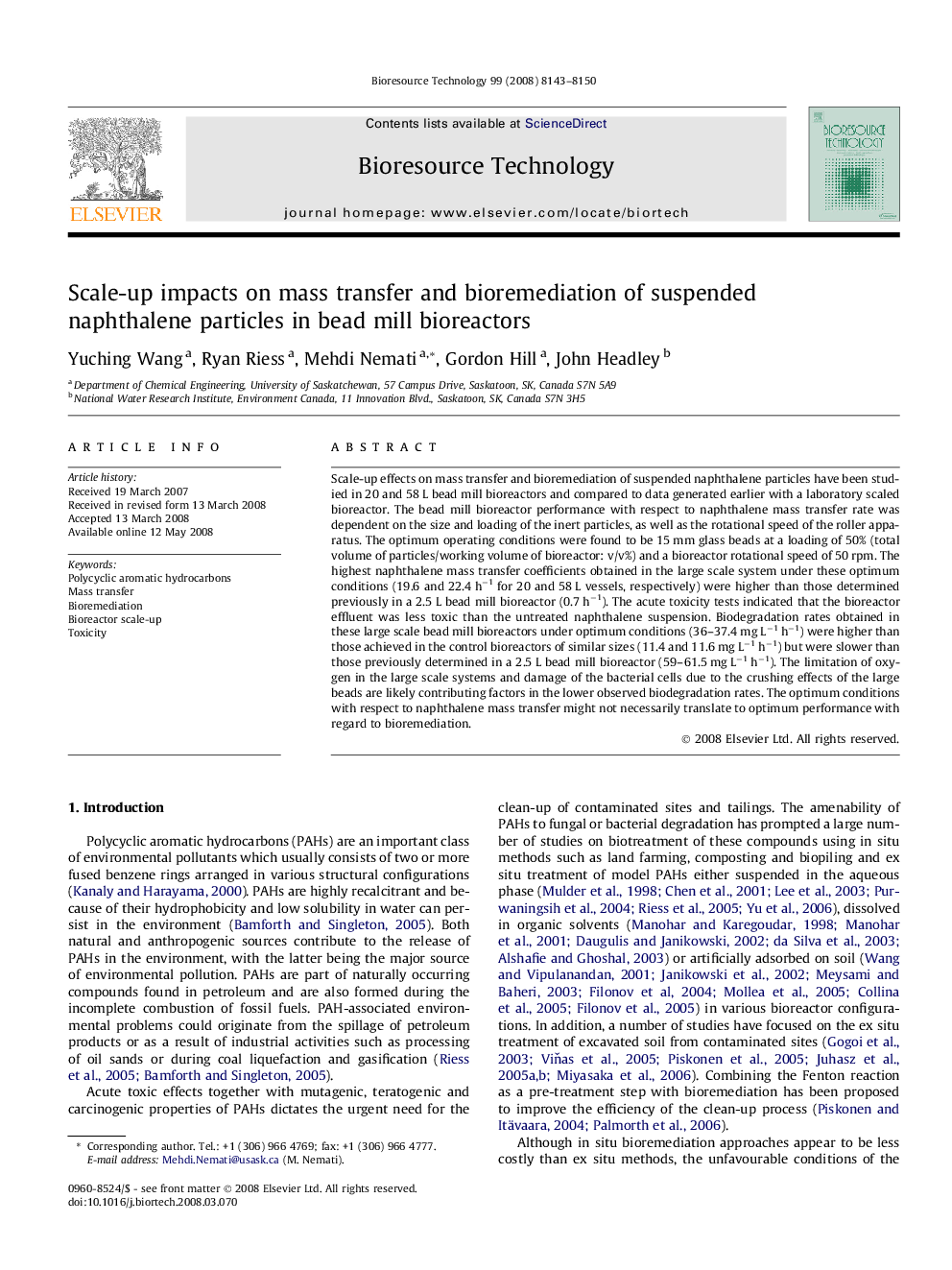| Article ID | Journal | Published Year | Pages | File Type |
|---|---|---|---|---|
| 684543 | Bioresource Technology | 2008 | 8 Pages |
Scale-up effects on mass transfer and bioremediation of suspended naphthalene particles have been studied in 20 and 58 L bead mill bioreactors and compared to data generated earlier with a laboratory scaled bioreactor. The bead mill bioreactor performance with respect to naphthalene mass transfer rate was dependent on the size and loading of the inert particles, as well as the rotational speed of the roller apparatus. The optimum operating conditions were found to be 15 mm glass beads at a loading of 50% (total volume of particles/working volume of bioreactor: v/v%) and a bioreactor rotational speed of 50 rpm. The highest naphthalene mass transfer coefficients obtained in the large scale system under these optimum conditions (19.6 and 22.4 h−1 for 20 and 58 L vessels, respectively) were higher than those determined previously in a 2.5 L bead mill bioreactor (0.7 h−1). The acute toxicity tests indicated that the bioreactor effluent was less toxic than the untreated naphthalene suspension. Biodegradation rates obtained in these large scale bead mill bioreactors under optimum conditions (36–37.4 mg L−1 h−1) were higher than those achieved in the control bioreactors of similar sizes (11.4 and 11.6 mg L−1 h−1) but were slower than those previously determined in a 2.5 L bead mill bioreactor (59–61.5 mg L−1 h−1). The limitation of oxygen in the large scale systems and damage of the bacterial cells due to the crushing effects of the large beads are likely contributing factors in the lower observed biodegradation rates. The optimum conditions with respect to naphthalene mass transfer might not necessarily translate to optimum performance with regard to bioremediation.
